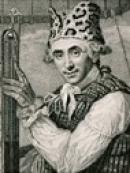|
History of National Weatherperson's Day |
||
 |
February 5 is National Weatherperson's Day, commemorating the birth of John Jeffries in 1745. Jeffries, one of America's first weather observers, began taking daily weather observations in Boston in 1774 and he took the first balloon observation in 1784. It’s easy to forget that around the clock, dedicated meteorologists and weathercasters are vigilantly creating forecasts to help you plan your day, and issuing warnings to help keep you safe. This is a day to recognize the men and women who collectively provide Americans with top notch weather, water, and climate forecasts.
|
|
|
National Weather Service |
||
|
|
The people at your local National Weather Service (NWS) forecast office gather the raw weather data, analyze those data, and study numerical computer model output to issue the weather and river forecasts and warnings to protect life and property. Specialized marine and aviation forecasts help enhance the nation’s economy. Spot forecasts help firefighters control wildfires and emergency management officials contain hazardous chemical spills. Extensive climate records help engineers, architects, researchers, insurance companies, and utilities. The primary mission of the NWS is to provide the American public with the best possible warning service to save lives. Recent severe weather statistics show that we continue to improve our capability to warn the public of impending hazardous weather. These more accurate and longer lead time warnings help communities stay safe. |
|
|
Weather Partnerships - America's Weather Team |
||
|
|
The NWS couldn't accomplish its mission without a diverse group of partners. Most of the colorful weather graphics seen on television come from another member of the America's weather team. Commercial weather companies enhance the presentation of the NWS data and information for their clients in the media and in many weather-sensitive industries, and provide customized forecasts and services for clients. Television weathercasters are the most visible members of the America's weather team. They are the trusted faces many people turn to for weather information, and they relay the NWS’s official watches and warnings for hazardous weather. On National Weatherperson's Day, the NWS thanks all of the volunteers and our partners in television and commercial weather services. |
|